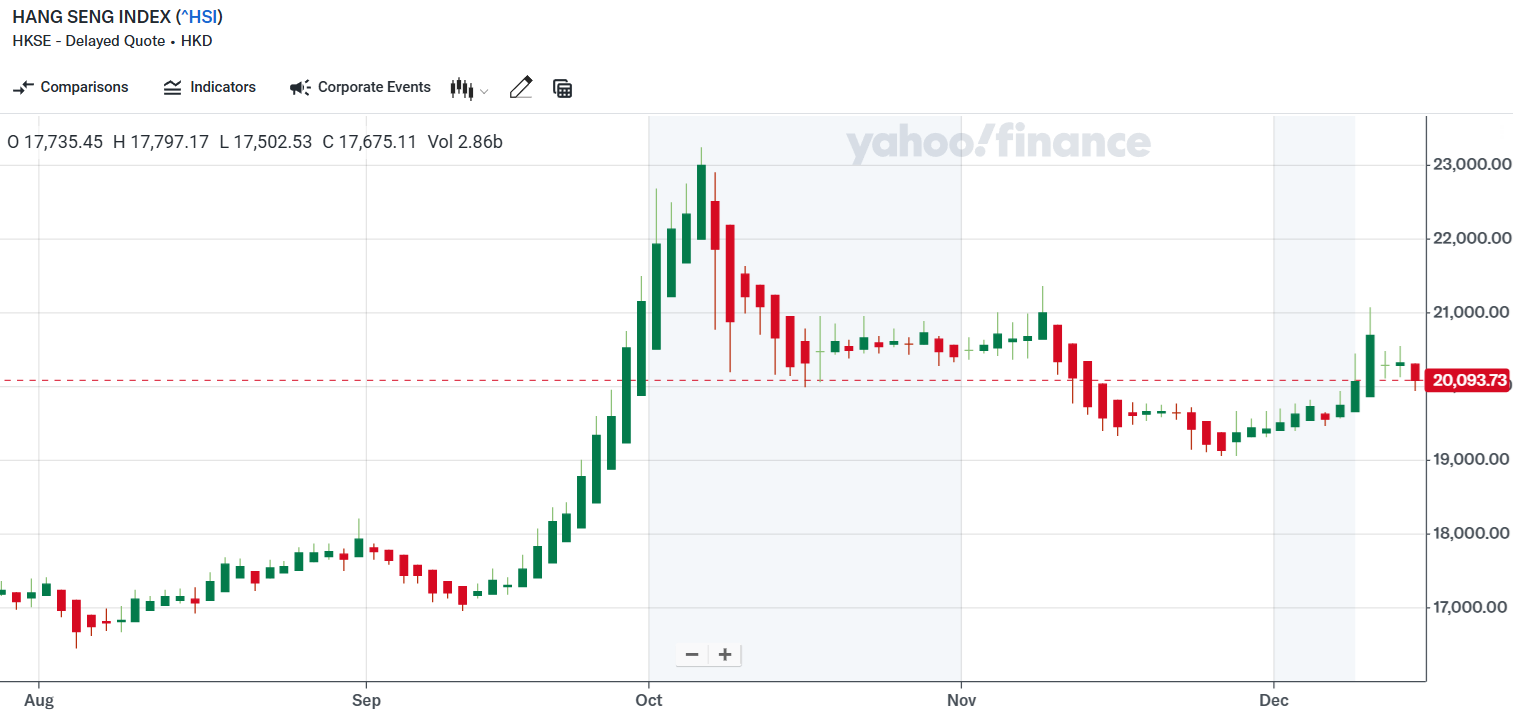
Source: Yahoo Finance
Loose Policy for the First Time Since 2008
The decision to adopt a looser monetary stance announced following a Politburo meeting, echoes measures last implemented during the 2008 global financial crisis. At that time, China unveiled a massive 4 trillion yuan ($586 billion) stimulus, equal to 13% of GDP, alongside aggressive interest rate cuts of 156 basis points and a decrease in the reserve requirement ratio by 1.5 percentage points. This approach helped stabilize the economy through one of the most challenging global downturns in decades.
Today, China faces a different set of economic pressures. Consumer demand remains tepid, the property market is in prolonged distress, and industrial over-reliance on exports has exposed the country’s vulnerabilities. Despite measures, including rate cuts and liquidity injections in late 2024, these challenges persist, prompting authorities to consider deeper structural adjustments. After Trump's reelection, the threat of high tariffs imposition can be added to the list.
Fiscal and Monetary Strategies
The Politburo's call for a more proactive fiscal policy aims to counter-cyclical adjustments. It plans to achieve this goal by expanding domestic demand and stabilizing key markets such as housing and stocks. According to analysts, the People's Bank of China – China’s national bank - is expected to reduce policy rates by 40–50 basis points by the end of 2025, potentially bringing them close to 1%. This would represent the start of a new monetary easing cycle aimed at reviving growth without triggering major currency depreciation. Markets welcomed this meeting’s outcome. Stocks surged, with Hong Kong's Hang Seng Index up 2.8% to a one-month high and China's government bonds rallied too.
Authorities have already unveiled a 10 trillion yuan ($1.4 trillion) package in November to address local government financing strains, however, it was not received as sufficient enough since. Therefore, additional fiscal measures targeting household consumption are anticipated. Analysts have urged Beijing to prioritize direct incentives for consumers, including potential expansions of welfare spending to support low-income households.
The Tariff Imposition Problem
China's economic policies are also preparing the country with the prospect of a trade war 2.0. President-elect Donald Trump has threatened tariffs of up to 60% on Chinese imports, a move that could severely impact China's export-driven industries. Economists are calling for stronger fiscal support to counteract these risks and mitigate deflationary pressures.
In this context, despite mounting trade tensions, the Chinese government has demonstrated significant success in high-tech manufacturing sectors such as electric vehicles, solar energy, and batteries. These advancements are likely to remain a crucial point of economic strategy as Beijing seeks to balance short-term stabilization with long-term competitiveness.
Despite the shift in policy tone, experts caution against expectations of an extreme stimulus comparable to the 2008 response. Policymakers are likely to adopt a gradual approach, adjusting measures based on economic indicators and external developments. As China enters this new phase of economic policymaking, the focus remains on navigating a fragile balance between economic growth, stabilizing financial markets, and addressing structural vulnerabilities.




.jpg)
.jpg)


